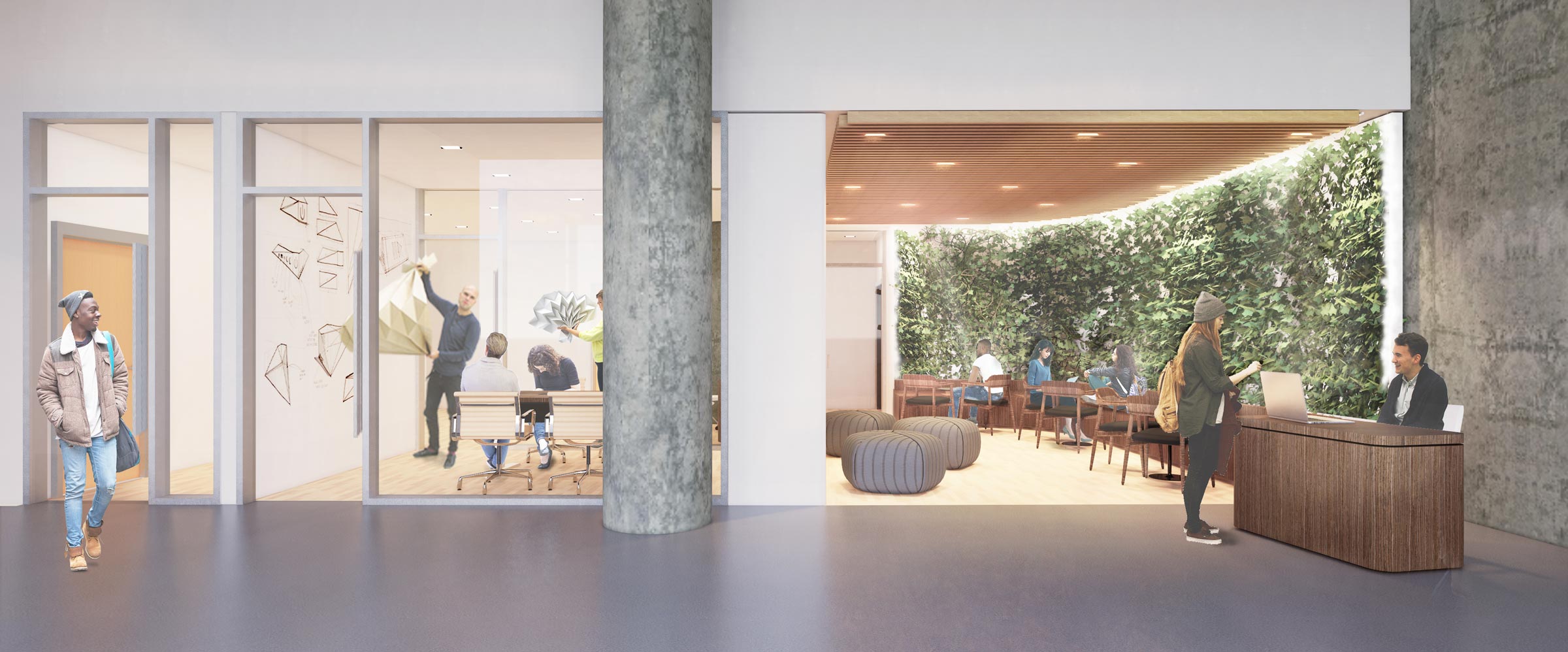How design expresses intent at George Brown’s Student Association
You’re a new student at one of George Brown’s three campuses in Toronto, Ontario. You look to your student association for support – to acclimatize to what may be a new city for you, to get direction on health and wellness services you need, or to just feel like you’ve made a connection with someone like-minded.
When you arrive at your student association office, you see a front desk. The message is: please come and get what you need, but then leave and go about your day. It’s a purely transactional experience, one that the George Brown Student Association wanted to change. In 2020, it began rethinking how their student association spaces worked at three campuses – Casa Loma, St. James, and the Waterfront.
“We had closed spaces, like a bank, where the client comes and leaves, “says Wafa Ulliyan, operations manager of the George Brown Student Association. “This was not the relationship we were trying to build. We were trying to create a more vibrant and dynamic exchange with our fellow students, so they see themselves as part of the organization.”
Sending the Right Message
The student association represents the interests of all George Brown College students. It focuses on representation, advocacy, events and delivering services to build a united student movement. They looked to Architecture Counsel (ACi) to redesign their student association spaces to offer a welcoming and supportive atmosphere that was more in line with their identity and service delivery model.
“Our major services depend on engagement with students,” says Ulliyan. “If our spaces don’t allow for this, then we’re not delivering a key component of our program. That’s where ACi came in, because they had worked with George Brown before on our student spaces. Through our RFP process, we determined that they understood our brand, our budget, and brought a lot of knowledge about student-focused spaces.”
ACi worked with the student association and George Brown College to design co-working hubs – places like the lobby of a boutique hotel, or a Silicon Valley shared workspace, where students would immediately feel welcome. Modern, attractive, and flexible, these areas were designed to provide services, support, display art and market events and services.
Bright, barrier-free, sustainable materials, accessible space, and wayfinding were critical parts of the design.

The Value of Collision
George Brown College draws its student population from Toronto, arguably one of the most multicultural cities in the world. As one of the most diverse colleges in Ontario, fostering inclusivity is a mandate of the student association.
“We represent a diverse population, so we need to hear their voices,” says Ulliyan. “We knew we needed to provide opportunities for engagement between different groups and to centralize the services they need in one space.”
The board of directors for George Brown represented the students and ensured their voices were reflected throughout the design. Program coordinators also engaged students a year before the process began to collect feedback on what they wanted: all valuable input that’s informed the design.
ACi always looks at space in terms of where collisions can take place, those chance encounters that build connection, inspiration, and community interaction. The student association spaces were refocused to not only facilitate access to services, but to encourage collisions where people stay and destress, meet someone new, network, study, have lunch, and take a break from the day.
“Every student coming to campus is looking for inclusive and safe space – all students have equal opportunity to access these services in our reimagined student union spaces,” says Ulliyan.
Looking Ahead
Ulliyan believes the work will deliver the atmosphere intended. And will even play an important role post-COVID.
“Many students doing online and remote learning told us they weren’t satisfied with the experience, that they missed the campus experience” she says. “That tells us that a student association space is high need, and done properly within all public health restrictions, it can help our students be more productive and more engaged in their academic experience.” This is the second project that Architecture Counsel has been privileged to work on for the George Brown College Student Association.

